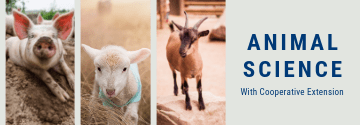Sucking the breath from our lungs and leaving the signs of harsh, the icy sting of an arctic wind on our cheeks meant winter has officially made its presence known. Although dressing in layers can sometimes be a hassle (because nobody enjoys wearing 30 lbs. of clothing to work in in below zero temperatures) it’s a necessity!
As much as we hate adding layers upon layers of clothing to our bodies, freezing temperatures combined with decreased circulation to exposed parts of the body can result in direct damage to tissue cells, also known as frostbite. The same goes for animals during these stretches of colder temperatures.
Two dairy farmers experiencing some of the coldest temperatures in history offered these tips:
Katy Brown, Wisconsin:
“We have a calf heater to get newborn (calves) dry faster. All new calves go in our old tiestall barn instead of outside in the hutches.”
Some additional tips Brown provides include:
- Adding extra, fresh bedding.
- Heating milk to higher temperature to prevent it from cooling down too much before calves can finish it.
- Providing extra milk during feedings.
- Including electrolytes to warm water to encourage them to drink more.
Emily Zweber, Minnesota:
“We try not to breed (cows to calve in) January to mid-February. Our calving pens are inside, and we only have three calves now.”
Zweber also recommends:
- Drying off teats completely after milking.
- Use a teat dip formulated for colder weather.
- Consider keeping calves with their dams a little longer to make sure they are dried off.
Keeping extra calf jackets available can also be handy. In extreme situations, it may be necessary to double-up on jackets and protect areas of tissue that receive less blood flow, such as the ears. Serving as ear muffs, a pair of socks could help protect the tips of a calf’s ears, similar to the photo above.
Unfortunately, once the signs of frostbite have been observed, it’s often too late to significantly save the damaged tissue. Therefore, prevention is key!
For more on this, read:


